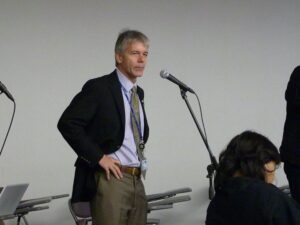 Did you know that the longleaf pine/wiregrass ecosystem, the characteristic habitat of Carolina Sandhills where I am visiting today, once covered approximately 90 million acres in the Southeastern United States (www.longleafalliance.org)? This unique ecosystem, shaped by thousands of years of natural fires that burned through every two to four years, has been reduced to fewer than two million acres. While the longleaf pine is the dominant tree species in this system and is essential to its integrity, the floral and faunal diversity of these forests lies in their understory. In fact, the longleaf pine–grassland forest may well be the most diverse North American ecosystem north of the tropics, containing rare plants and animals not found anywhere else. Today however, the longleaf pine is an ecosystem in trouble everywhere in the South. Why should you care?
Did you know that the longleaf pine/wiregrass ecosystem, the characteristic habitat of Carolina Sandhills where I am visiting today, once covered approximately 90 million acres in the Southeastern United States (www.longleafalliance.org)? This unique ecosystem, shaped by thousands of years of natural fires that burned through every two to four years, has been reduced to fewer than two million acres. While the longleaf pine is the dominant tree species in this system and is essential to its integrity, the floral and faunal diversity of these forests lies in their understory. In fact, the longleaf pine–grassland forest may well be the most diverse North American ecosystem north of the tropics, containing rare plants and animals not found anywhere else. Today however, the longleaf pine is an ecosystem in trouble everywhere in the South. Why should you care?Because our life depends on the longleaf pine/wiregrass ecosystem, and all of the other ecosystems that make up our world. Ecosystems provide vital human services that sustain our health, well-being and livelihoods. Not surprisingly, many of these ecosystems, and the species that depend on them, are in real trouble.
Over the millennia, the earth has been guided by small scale incremental forces driven by natural events. Over the last century, that has changed. Recent studies and fossil records suggest that the average extinction rates over the last 100 million years averaged around seven species per year. Fast-forward to today and the species extinction rate is estimated to be in excess of 3,000 species per year. That’s right, from a few to 3,000, and according to many scientists, is accelerating rapidly. (Check out the book The End of the Wild by Stephen M. Meyer)
The global response to the loss of our biodiversity began in 1992 during the Earth Summit in Rio de Janeiro, where the Convention on Biological Diversity (CBD) was opened for signature. The CBD is an international, legally binding treaty with three primary goals; conservation of biological diversity, sustainable use of its components and fair and equitable sharing of benefits arising from its genetic resources. Each of the signatories, or parties to the CBD, are obligated to develop national strategies to conserve and sustain the use of biological diversity. For the past 18 years, the primary tool to do that has been conserving the biodiversity that we have left. Now we realize that is not good enough. Not only do we need to continue to protect critical habitat to protect species like the red-cockaded woodpecker, we also have to begin restoring degraded, damaged or destroyed ecosystems. Fortunately the CBD recognized this during the drafting of the convention, yet up until very recently has not been employed to any great extent. Now is the time!
As the Global Restoration Ambassador for the Society for Ecological Restoration, I will be attending the CBD, Conference of Parties in Nagoya, Japan next week. As a delegate, I will be participating directly with the Parties to the Convention to showcase how ecological restoration can enhance biodiversity, sustain people’s livelihoods and mitigate future climate change.
Throughout next week I will be blogging and twittering from Nagoya.
I want to know what you think. What should communities around the world be doing to conserve biodiversity? How can ecological restoration become a major catalyst for saving our planet’s flora and fauna? What do you want me to convey to the participants of the conference. My voice is much stronger with you. Don’t be shy. I won’t – our life depends on it!
Further Reading
Meet Water Resources Engineer Kayla BrownNew Mexico Must Become a Catcher of Rain
Ripple Effects
Get to know Water Resources Engineer Jake Radeff
Meet Conservation Biologist Nolan Schillerstrom
More From This Author
Ecological Restoration: Where it has been and where it is going. (Expert Panel Discussion)Thoughts on Stakeholder Engagement
Biohabitats receives ASLA’s highest honor
Invasion Biology
Thoughts on Ecological Restoration and Climate Change

